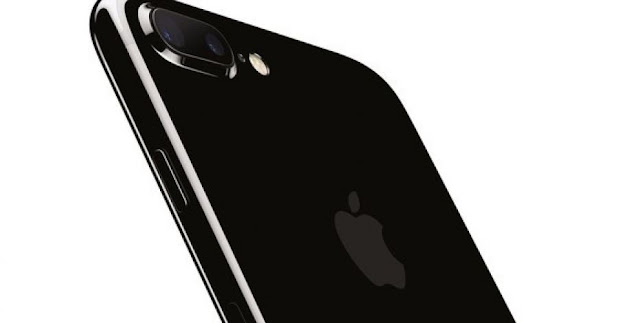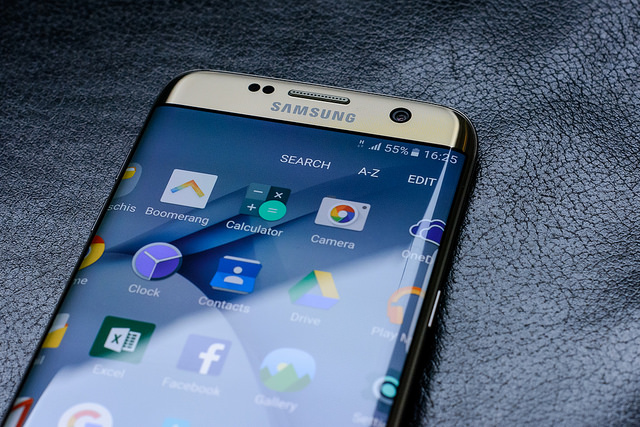Apple Inc's iPhone Business: 3 Things Investors Need to Know
Apple (NASDAQ: AAPL) fundamentally redefined the concept of the smartphone with its 2007 introduction of the original iPhone. In the years following, the company has led the way in bringing significant, even game-changing features that have helped transform the smartphone into arguably the most important -- and most used -- computing device category in today's world.
The iPhone, unsurprisingly, is far and away Apple's most important product category from a business and financial point of view.

Today, I'd like to go over three key facts about Apple's iPhone business that current and potential investors in the company should be keenly aware of.
Most of Apple's revenue and profits come from iPhone
In the company's last fiscal year, the iPhone brought in approximately $155 billion in revenue out of a total of roughly $234 billion. This means that more than 66% of the company's revenue that year came from sales of iPhones.
Moreover, Apple's dependence on the iPhone has actually increased over the last couple of years, jumping from 53.4% of revenue in fiscal year 2013 to a whopping 66.3% of revenue in fiscal year 2015.
Additionally, as the iPhone is widely believed to be a higher-margin product than the company's iPad or Mac lineup, it seems likely that the iPhone makes up an even larger portion of Apple's operating profit, and therefore net income.
It's this dependence on the iPhone that leads many investors, analysts, and investment commentators to focus so much on the performance of this product category for Apple. If the iPhone is doing well, Apple's financials and share price should do well. If iPhone does badly, then the company's financials and share price should largely follow suit.
# Apple's iPhone average selling prices eclipse its competitors'
One of the reasons that Apple has seen such financial success from the iPhone is that it sells a lot of iPhones at average selling prices (ASPs) that are well above what its competitors are able to command. In fiscal year 2015, for example, Apple brought in around $155 billion in revenue from iPhone on unit shipments of about 231 million, implying an ASP of $665.
To put this into perspective, during the second quarter 2016, Apple's chief rival Samsung (NASDAQOTH: SSNLF) reported overall mobile revenue of approximately $23 billion. Market research firm IDC estimates that Samsung shipped approximately 77 million smartphones in that quarter.
Even if we assume that all of this mobile revenue came from smartphones, we're looking at smartphone ASPs of approximately $298 -- less than half of Apple's. Note that this is an upper bound, as Samsung's mobile business includes revenue from tablets and smartwatches in addition to smartphones, including low-end smartphones.
In terms of average revenue and gross profit per smartphone, Apple is way out in front relative to its competition. This is viewed as both a strength (Apple currently has pricing power, allowing it to capture much of the profit in the smartphone industry), as well as a potential liability (Apple is at risk of being undercut on pricing, for example).
# Apple's iPhone business is currently growth-challenged
Through fiscal year 2015, Apple's iPhone business always managed to deliver some level of revenue and unit growth. However, Apple is currently expected to report its first-ever annual decline in iPhone unit shipments and revenue in fiscal year 2016, following the first quarterly declines that were recently reported.
Clearly, given that Apple's revenue and profit depend so substantially on iPhone sales, this has been a key tenet of the bearish thesis around the company's stock. If the iPhone continues to decline, then Apple's revenue and profits are set to suffer, particularly as it will be very difficult for Apple's other businesses -- large in their own right, but in aggregate still much smaller than iPhone -- to pick up the slack.
However, if the iPhone 7 helps return the iPhone category to growth in the coming fiscal year, then the company could be looking at couple of good years of iPhone growth, particularly as Apple is expected to make some dramatic changes with next year's iPhone that could further fuel demand growth.
Opens a New Window.
# A secret billion-dollar stock opportunity
The world's biggest tech company forgot to show you something, but a few Wall Street analysts and the Fool didn't miss a beat: There's a small company that's powering their brand-new gadgets and the coming revolution in technology. And we think its stock price has nearly unlimited room to run for early in-the-know investors
The iPhone, unsurprisingly, is far and away Apple's most important product category from a business and financial point of view.

Today, I'd like to go over three key facts about Apple's iPhone business that current and potential investors in the company should be keenly aware of.
Most of Apple's revenue and profits come from iPhone
In the company's last fiscal year, the iPhone brought in approximately $155 billion in revenue out of a total of roughly $234 billion. This means that more than 66% of the company's revenue that year came from sales of iPhones.
Moreover, Apple's dependence on the iPhone has actually increased over the last couple of years, jumping from 53.4% of revenue in fiscal year 2013 to a whopping 66.3% of revenue in fiscal year 2015.
Additionally, as the iPhone is widely believed to be a higher-margin product than the company's iPad or Mac lineup, it seems likely that the iPhone makes up an even larger portion of Apple's operating profit, and therefore net income.
It's this dependence on the iPhone that leads many investors, analysts, and investment commentators to focus so much on the performance of this product category for Apple. If the iPhone is doing well, Apple's financials and share price should do well. If iPhone does badly, then the company's financials and share price should largely follow suit.
# Apple's iPhone average selling prices eclipse its competitors'
One of the reasons that Apple has seen such financial success from the iPhone is that it sells a lot of iPhones at average selling prices (ASPs) that are well above what its competitors are able to command. In fiscal year 2015, for example, Apple brought in around $155 billion in revenue from iPhone on unit shipments of about 231 million, implying an ASP of $665.
To put this into perspective, during the second quarter 2016, Apple's chief rival Samsung (NASDAQOTH: SSNLF) reported overall mobile revenue of approximately $23 billion. Market research firm IDC estimates that Samsung shipped approximately 77 million smartphones in that quarter.
Even if we assume that all of this mobile revenue came from smartphones, we're looking at smartphone ASPs of approximately $298 -- less than half of Apple's. Note that this is an upper bound, as Samsung's mobile business includes revenue from tablets and smartwatches in addition to smartphones, including low-end smartphones.
In terms of average revenue and gross profit per smartphone, Apple is way out in front relative to its competition. This is viewed as both a strength (Apple currently has pricing power, allowing it to capture much of the profit in the smartphone industry), as well as a potential liability (Apple is at risk of being undercut on pricing, for example).
# Apple's iPhone business is currently growth-challenged
Through fiscal year 2015, Apple's iPhone business always managed to deliver some level of revenue and unit growth. However, Apple is currently expected to report its first-ever annual decline in iPhone unit shipments and revenue in fiscal year 2016, following the first quarterly declines that were recently reported.
Clearly, given that Apple's revenue and profit depend so substantially on iPhone sales, this has been a key tenet of the bearish thesis around the company's stock. If the iPhone continues to decline, then Apple's revenue and profits are set to suffer, particularly as it will be very difficult for Apple's other businesses -- large in their own right, but in aggregate still much smaller than iPhone -- to pick up the slack.
However, if the iPhone 7 helps return the iPhone category to growth in the coming fiscal year, then the company could be looking at couple of good years of iPhone growth, particularly as Apple is expected to make some dramatic changes with next year's iPhone that could further fuel demand growth.
Opens a New Window.
# A secret billion-dollar stock opportunity
The world's biggest tech company forgot to show you something, but a few Wall Street analysts and the Fool didn't miss a beat: There's a small company that's powering their brand-new gadgets and the coming revolution in technology. And we think its stock price has nearly unlimited room to run for early in-the-know investors



Comments
Post a Comment